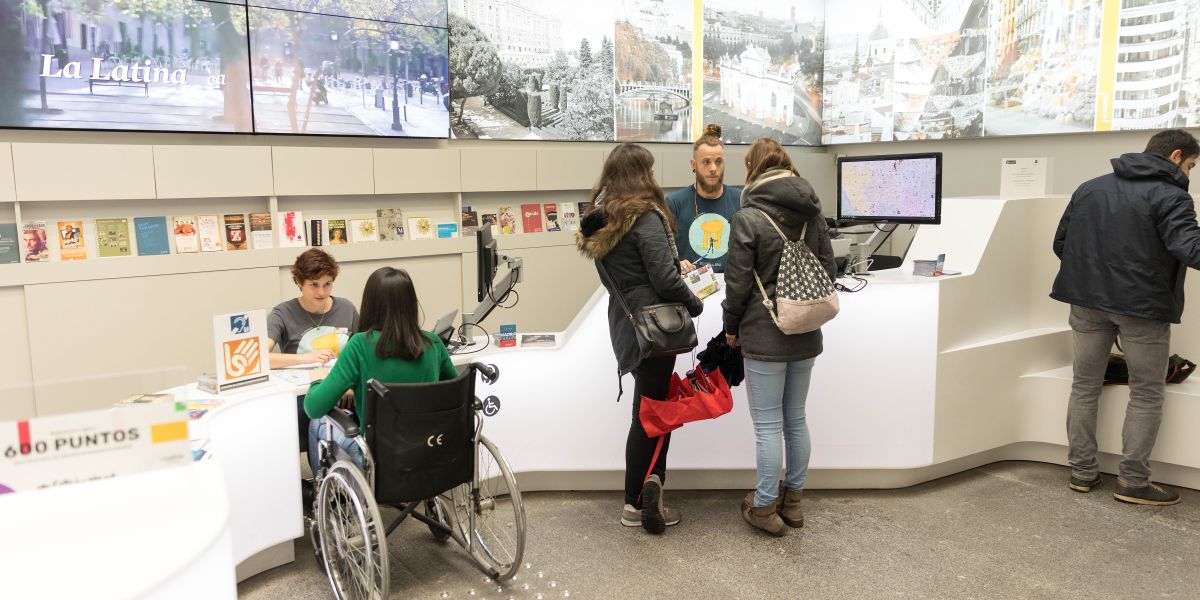29 July 2024
for Madrid Nuevo Norte

According to the latest World Bank data, more than half the global population now lives in urban areas. This figure rises to more than 70% in Europe. The United Nations Department of Economic and Social Affairs forecasts that this will rise by 13% by 2050. Cities, increasingly diverse and complex, are becoming the epicentre of human relations. But are they designed to be so? How does urban infrastructure affect the way we relate to each other? Do all cities embrace each of the groups inhabiting them? To answer these questions, it is increasingly common to hear about the concept of inclusive urbanism from those who think about cities.
This people-centred approach to city design has gained prominence in modern urban planning, addressing the need to create cities that are accessible and equitable for all inhabitants, regardless of age, gender, physical ability or socioeconomic status. This approach not only focuses on the removal of physical barriers, but seeks to foster the participation and well-being of all citizens in the urban environment.
Inclusive urbanism pursues the construction of “soft cities” for all its inhabitants. The basic idea is that city planning should address the essential needs of different people in public space (such as walking, sitting or talking to neighbours) and answer questions about how to catch the bus, how to get to school or how to ensure a safe environment for all. In other words, it is about humanising public space in our cities.
To this end, the design of inclusive cities requires a comprehensive approach and plans that contemplate the transformation of strategic areas of the city and public spaces, such as the creation and transformation of parks, squares and gardens, allowing for healthy and community-centred life.
Green spaces play a crucial role in the well-being of their inhabitants, as they contribute significantly to the physical and mental health of the population. The presence of parks, gardens and recreational areas encourages physical activity, reduces stress and improves air quality. It also promotes social cohesion, providing places where people can gather and connect with nature. These spaces are essential for child development, providing a safe and stimulating environment for play and learning. According to the UNICEF report The Necessity of Urban Green Space for Children’s Optimal Development, there is scientific evidence that green spaces can help alleviate the negative effects of urban living and help children develop to their full potential.
Traditionally, cities have been designed with a view to a homogeneous population without considering, for example, the needs of people with reduced mobility. However, removing physical barriers through ramps, wide pavements, accessible pedestrian crossings and adapted public transport are already helping to move from cities from limiting to inclusive.
But accessibility also means access to information and services. Braille signage, mobile applications guiding visually impaired people and auditory alert systems on public transport are crucial to ensure that everyone can move freely around the city. For example, some Spanish cities have been pioneers in developing playgrounds adapted to children with functional diversity or have stood out for allocating public spaces for sports other than football in parks, improving street lighting and safety or widening the pavement for pedestrians using buggies.
The 2030 Agenda for Sustainable Development reaffirms the importance of public space in the global development agenda; in particular, target 7 of Sustainable Development Goal 11 refers especially to “universal access to safe, inclusive and accessible green and public spaces, in particular for women and children, older persons and persons with disabilities”.
In 2018, the cities of New York, São Paulo, Rio, Chicago, Curitiba, Berlin, Amman and Laayoune launched the Cities for all campaign, coordinated by the World Enabled organisation, to boost urban inclusion. A study by the same organisation prepared in 2019 for United Cities and Local Governments developed a series of recommendations for local governments on public policies to achieve more inclusive cities, summarised in the following main principles: